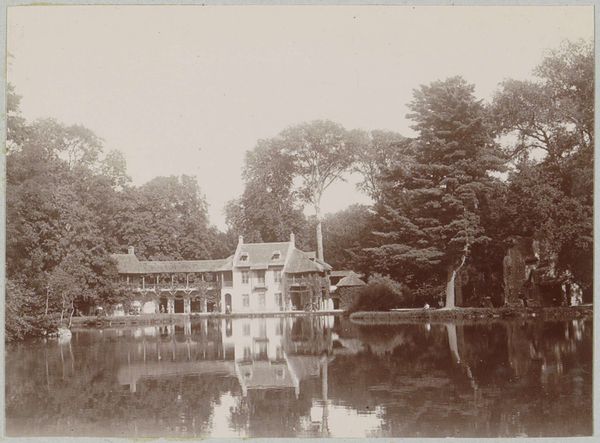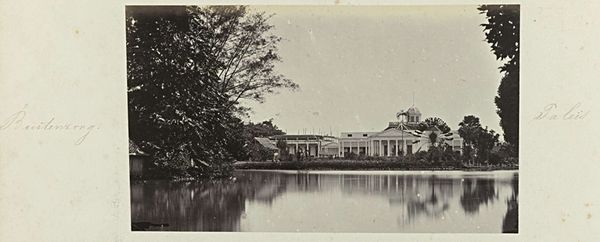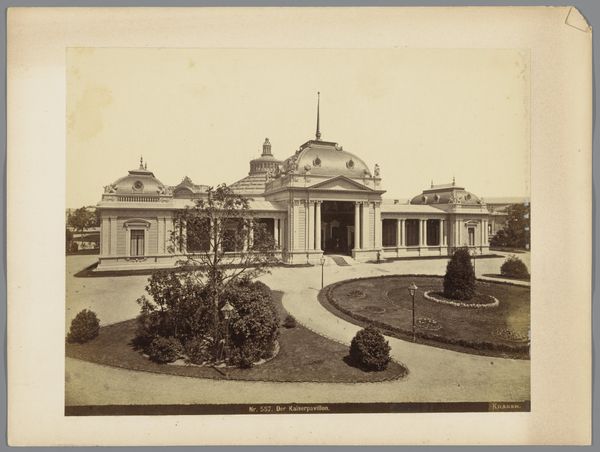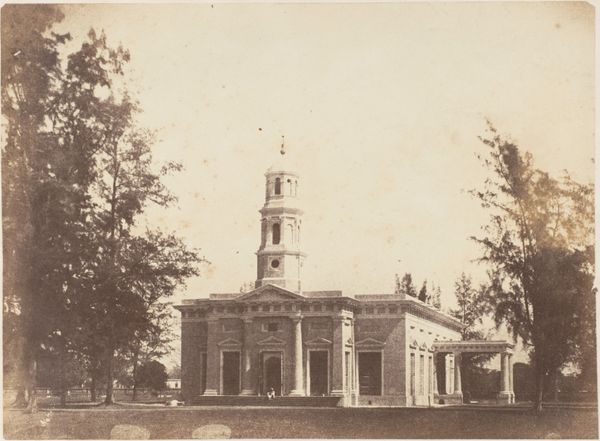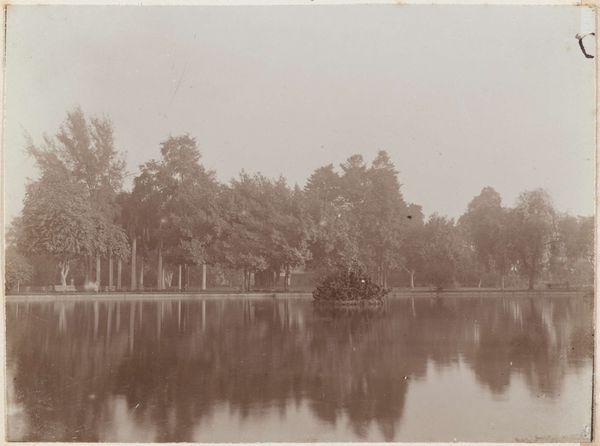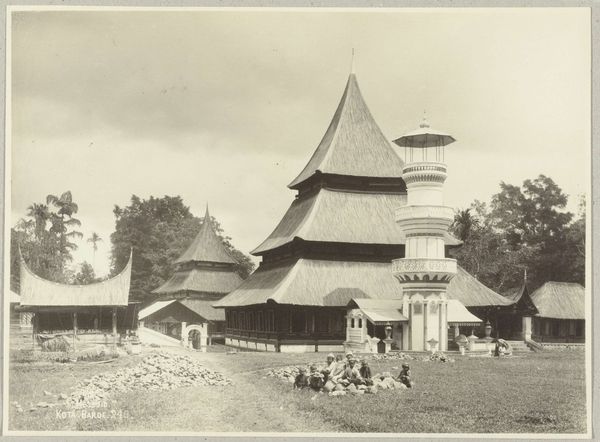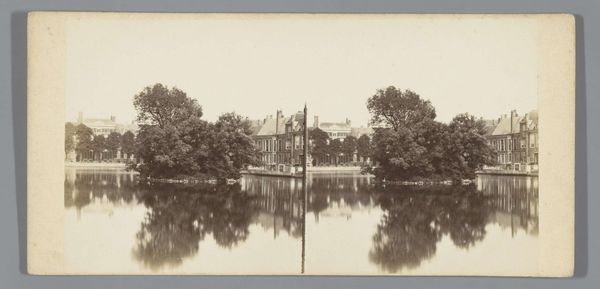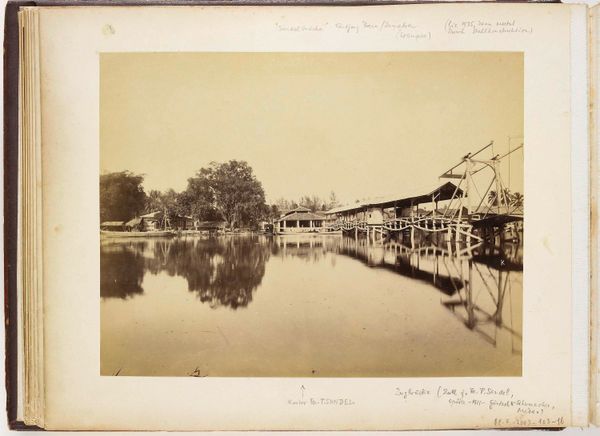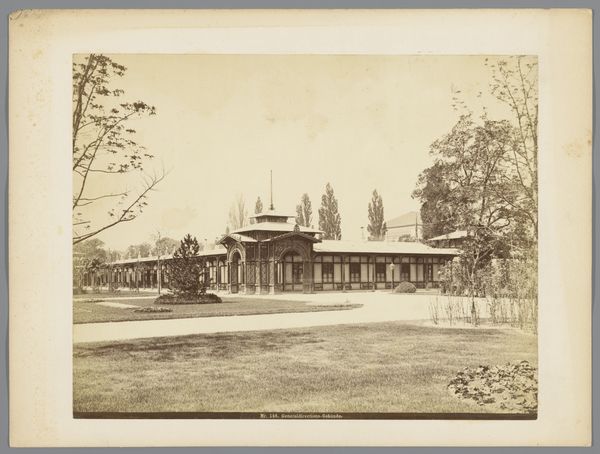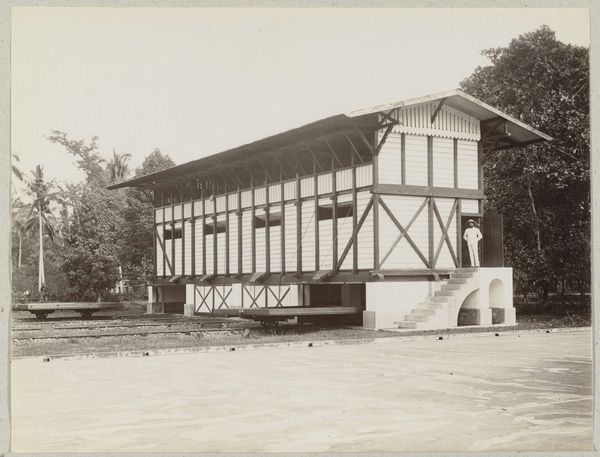
print, photography, gelatin-silver-print, architecture
# print
#
landscape
#
outdoor photography
#
photography
#
orientalism
#
gelatin-silver-print
#
islamic-art
#
architecture
Dimensions: height 241 mm, width 291 mm
Copyright: Rijks Museum: Open Domain
Curator: This gelatin-silver print from 1864 by Samuel Bourne depicts the Shah-e-Hamdan mosque in Srinagar, Jammu & Kashmir, India. Editor: The stillness of the water, the monochromatic palette... there's a distinct sense of serenity evoked by this image, almost meditative. Curator: Bourne was known for his meticulous approach to landscape photography. The wet collodion process he used then was incredibly labour-intensive, requiring portable darkrooms and careful preparation in difficult conditions. Consider the logistics of creating this photograph in remote Kashmir in the 19th century. The very act of capturing this image becomes a testament to British imperial ambition and colonial administration in the mid-nineteenth century. Editor: Absolutely. And that context adds layers to the symbolism. Water, for example, often represents purity and transition in many cultures, and in an Islamic structure, that resonance amplifies. The mosque itself, how many similar structures are like this in the world? It seems to reach to the sky. I am particularly intrigued by the almost pagoda-like structure of the roof and how it rises up to that spire. It suggests cultural and religious dialogues over long periods. Curator: You know, looking at the materiality here - the timber construction of the mosque, reflecting in the water alongside simple boats - I am prompted to consider what that signifies for the local Kashmiri craftsmanship and access to resources. What specific types of wood were used? And who was responsible for that labor? Editor: I appreciate that focus. The photograph’s power lies not just in documentation but in the spiritual aura it conveys. How it depicts the sanctity of place. The light striking the mosque makes one think of the Divine Light often spoken about by mystics. The image appears to capture a moment where the physical and the spiritual meet in harmony. Curator: Examining how this photograph circulated and was consumed in Britain during the rise of colonial power offers insight into the orientalist lens through which Kashmir, and its artistic and architectural production, was viewed. What did the British imagine Kashmir to be, viewing these types of photographs? Editor: Interesting perspective. I've always viewed this particular image as a bridge across time, a reminder of the enduring spiritual quest. Curator: Well, my takeaway hinges on Bourne’s practice within the larger colonial framework, its techniques and subsequent circulation. Editor: For me, the quiet harmony of faith and place whispers. Thank you.
Comments
No comments
Be the first to comment and join the conversation on the ultimate creative platform.



